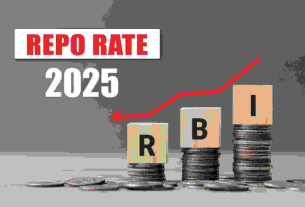Personal loans have become one of the most popular financing options for individuals seeking quick access to funds for various purposes like medical emergencies, weddings, travel, or debt consolidation. However, when applying for a loan, understanding how interest rates affect your monthly payments is crucial. A personal loan EMI calculator is a handy tool that helps evaluate your financial commitment and plan repayments efficiently.
This article discusses how interest rates impact the results of a personal loan EMI calculator, with a focus on a ₹30,000 personal loan as an example, and provides insights to borrowers on managing their finances effectively.
What Is a Personal Loan EMI Calculator?
A personal loan EMI calculator is an online tool designed to calculate the Equated Monthly Installment (EMI) for your loan based on the principal amount, interest rate, and loan tenure. It simplifies the process of determining monthly payments, giving borrowers a clear picture of their repayment obligations.
The formula used in a personal loan EMI calculator is:
EMI = [P x R x (1+R)^N] / [(1+R)^N – 1]
Where:
- P is the loan principal amount
- R is the monthly interest rate (annual rate divided by 12)
- N is the loan tenure in months
Using the calculator is straightforward. You simply input the loan amount, interest rate, and tenure, and the EMI is computed instantly.
How Do Interest Rates Impact Your Personal Loan EMI?
Interest rates play a pivotal role in determining the EMI amount. A higher interest rate increases your EMI, while a lower rate reduces it. Understanding this relationship is essential for borrowers to select the right loan offer and plan their monthly budget.
1. Fixed vs. Floating Interest Rates
Interest rates can be fixed or floating:
- Fixed interest rates: These remain constant throughout the loan tenure, making it easier for borrowers to predict and plan their monthly payments.
- Floating interest rates: These fluctuate based on market conditions, potentially leading to variations in monthly EMI amounts.
While fixed rates offer stability, floating rates might be beneficial in declining interest rate scenarios.
2. Impact of Interest Rates on Loan Tenure
With higher interest rates, borrowers may need to opt for longer loan tenures to manage monthly payments. However, this increases the overall cost of the loan due to higher interest accumulation over time. Conversely, lower interest rates allow borrowers to repay their loans faster without stretching their budget.
3. The Trade-Off Between Tenure and EMI
Shorter loan tenures lead to higher EMIs but reduce the interest outflow, making the loan more affordable in the long term. Longer tenures lower the EMI but increase total interest payments. Using a personal loan EMI calculator, you can experiment with combinations to find a balance that suits your financial situation.
Example: Calculating EMI for a ₹30,000 Personal Loan
Let us take an example of a ₹30,000 personal loan to illustrate how interest rates affect EMI calculations. Assume you are considering two different lenders, each offering varying interest rates and tenures.
Scenario 1: Loan with 10% Interest and a 12-Month Tenure
Using the formula or a personal loan EMI calculator, the EMI is calculated as:
- Principal (P): ₹30,000
- Interest Rate (Annual): 10% (Monthly Rate: 10% ÷ 12 = 0.00833)
- Tenure (N): 12 months
Using the formula:
EMI = [30,000 x 0.00833 x (1+0.00833)^12] / [(1+0.00833)^12–1]
The EMI comes out to ₹2,623.
Total payment over the tenure: ₹2,623 x 12 = ₹31,476
Total interest paid: ₹31,476 – ₹30,000 = ₹1,476
Scenario 2: Loan with 12% Interest and a 24-Month Tenure
Now consider a higher interest rate and longer loan tenure to compare:
- Interest Rate (Annual): 12% (Monthly Rate: 12% ÷ 12 = 0.01)
- Tenure (N): 24 months
Using the EMI formula or a calculator:
EMI = ₹1,414
Total payment over the tenure: ₹1,414 x 24 = ₹33,936
Total interest paid: ₹33,936 – ₹30,000 = ₹3,936
Comparison
The above scenarios demonstrate how both interest rates and tenure impact EMI and overall loan costs. While Scenario 1 features a higher EMI, the borrower pays significantly less interest compared to Scenario 2. It underscores the importance of choosing your loan terms wisely.
Benefits of Using a Personal Loan EMI Calculator
A personal loan EMI calculator can help borrowers make informed decisions when applying for a loan. Here are some key benefits:
1. Saves Time and Effort
Manually calculating EMI can be tedious and prone to errors. An EMI calculator simplifies the process, delivering accurate results within seconds.
2. Provides Financial Clarity
By entering different variables, borrowers can understand how changes in loan amount, interest rate, and tenure impact their monthly payments.
3. Helps Compare Loan Options
Borrowers can input offers from multiple lenders into the EMI calculator to compare terms and costs, enabling them to choose the most favorable option.
4. Allows Flexible Planning
EMI calculators offer the flexibility to experiment with various combinations to arrive at an optimal balance between tenure and monthly payments.
Factors to Consider When Using a Personal Loan EMI Calculator
While using a personal loan EMI calculator, keep these factors in mind:
1. Interest Rate
Interest rates vary across lenders and depend on several factors such as your credit score, income, and repayment history. Ensure you input a realistic rate based on individual loan offers.
2. Loan Tenure
Choose a tenure that aligns with your financial goals. A shorter tenure minimizes interest costs, while a longer tenure offers affordability in monthly payments.
3. Processing Fees and Other Charges
Most calculators focus purely on principal and interest. However, additional fees like processing charges may increase the effective loan cost. Ensure you account for these elements separately.
Tips to Lower Your Personal Loan EMI
Reducing your EMI can ease your financial burden. Here are some strategies to consider:
1. Choose a Longer Tenure
While this increases the total interest paid, extending the tenure will reduce your monthly EMI, making repayments more manageable.
2. Improve Your Credit Score
A high credit score improves eligibility for loans at lower interest rates, which directly reduces EMI amounts.
3. Compare Loan Offers
Use a personal loan EMI calculator to evaluate proposals from multiple lenders and choose the option with the most favorable interest rate and terms.
4. Prepay When Possible
If you have surplus funds, consider making prepayments to reduce the principal amount. This directly lowers future EMIs and saves interest costs.
Conclusion
Interest rates are a key determinant in calculating EMI for personal loans. A personal loan EMI calculator empowers borrowers to assess their repayment obligation with clarity, enabling them to make informed decisions when availing loans. Taking a ₹30,000 personal loan as an example, the difference in interest rates and tenure illustrates the importance of carefully choosing loan terms to balance affordability and total loan cost.
By understanding the impact of interest rates and utilizing tools like EMI calculators effectively, borrowers can plan their finances wisely, ensure smooth repayments, and minimize overall costs. Before finalizing a loan, always compare options, evaluate costs, and prioritize transparency to make the best financial choices. Whether it’s for short-term needs or long-term aspirations, managing your personal loans efficiently helps you achieve your goals without financial strain.




